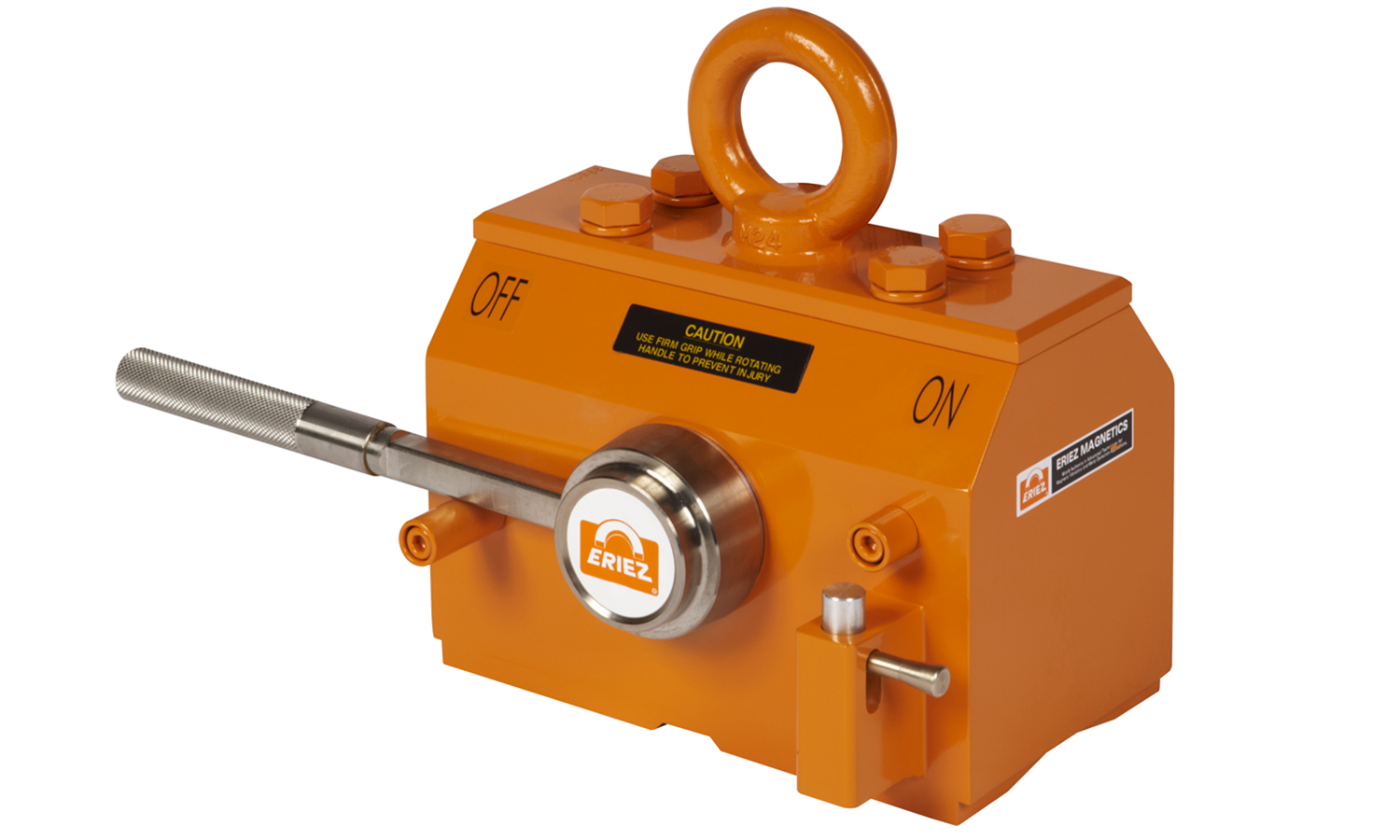
Permanent lifting magnets make quick work of loading and unloading burn/laser tables while providing greater safety than many other mechanical material handling devices, according to a new white paper from Eriez.
The paper, “Improve Safety, Speed and Efficiency in Cutting & Burn Tables with Permanent Lifting Magnets,” by Eriez metalworking market manager Andrew Kloecker, covers the features and benefits of lifting magnets and offers guidance for proper selection based on the application.
According to the white paper, permanent lifting magnets can lift and transfer a variety of iron and steel parts without slings, hooks or cables—and without marring the product’s surface. There is no requirement for an outside power source, thus no concern for dropping parts due to a power outage.
The white paper explains that there are three common lift magnet categories: lever-operated, automatic and full coverage. Kloecker describes the key factors to consider when choosing a lifting magnet, including dimensions, weight, shape, material thickness, temperature, surface condition and contact area of the piece to be lifted.
As explained in the white paper, full coverage systems are an ideal choice for production facilities looking to gain maximum torch time. These powerful systems utilize a large, full-contact magnet surface area, with no gaps in coverage.
The white paper concludes with a case study spotlighting one of North America’s premiere suppliers of carbon steel parts-to-print. Using an Eriez Full Coverage Lift Magnet, the customer was able to reduce the time to unload 60-inch by 360-inch steel sheet from 1.5 hours down to 15 minutes, allowing the production team to more than quadruple previous output on the table.
To learn more about Eriez Permanent Lifting Magnets, visit Eriez - Lifting Magnets . To download “Improve Safety, Speed and Efficiency in Cutting & Burn Tables with Permanent Lifting Magnets,” go to erieznews.com/nr584.
Contact Details
Related Glossary Terms
- metalworking
metalworking
Any manufacturing process in which metal is processed or machined such that the workpiece is given a new shape. Broadly defined, the term includes processes such as design and layout, heat-treating, material handling and inspection.







